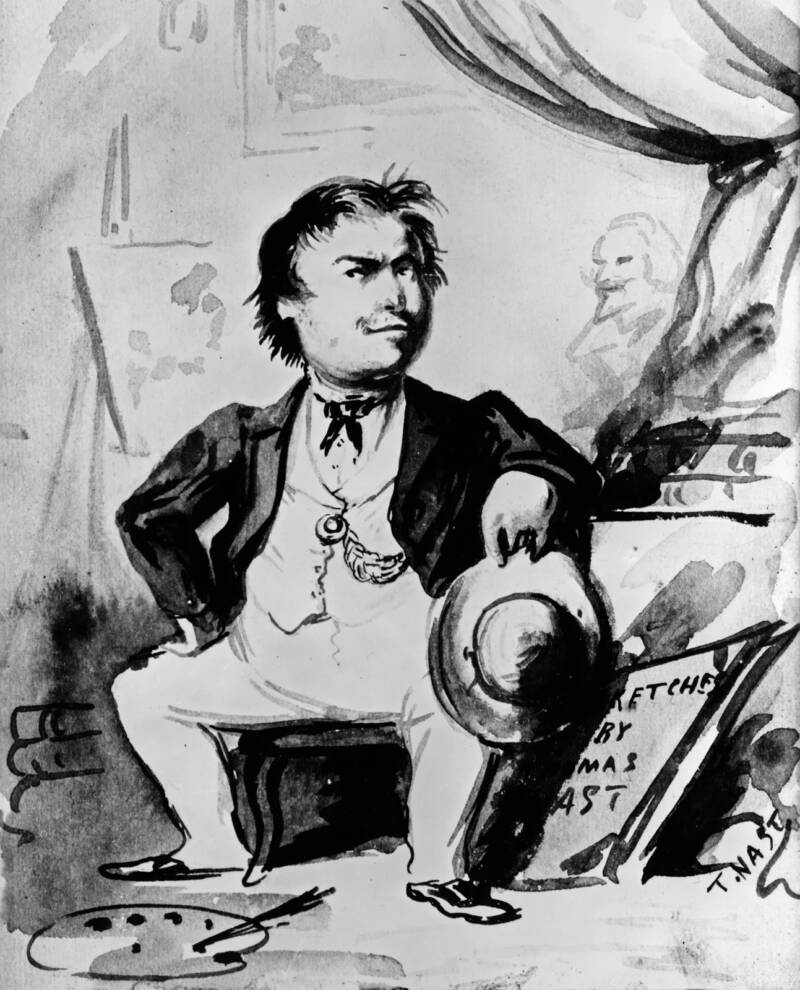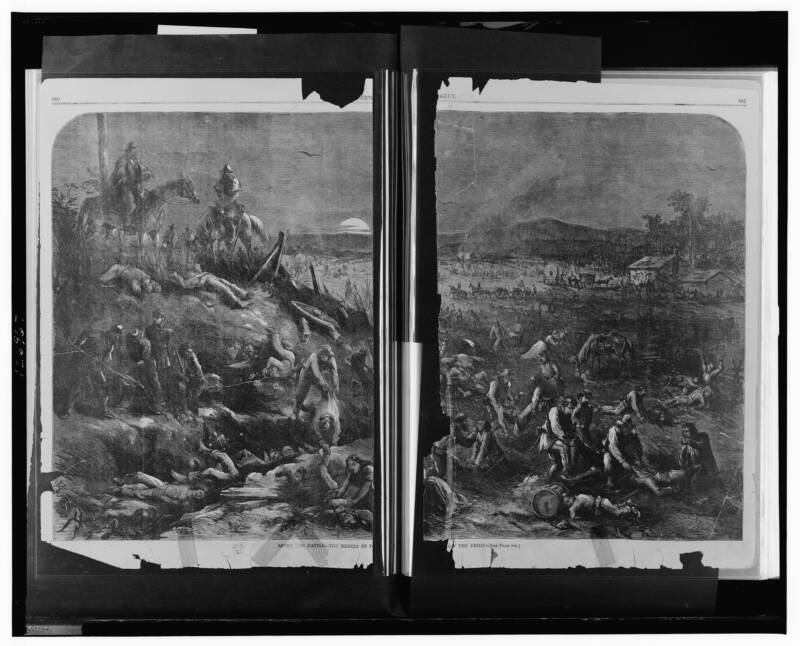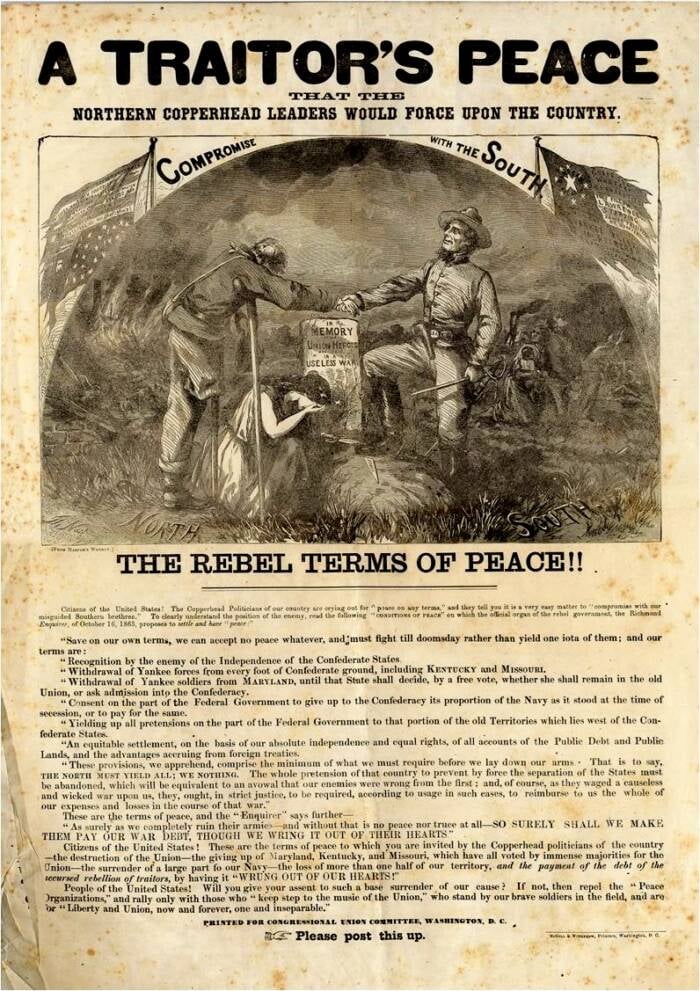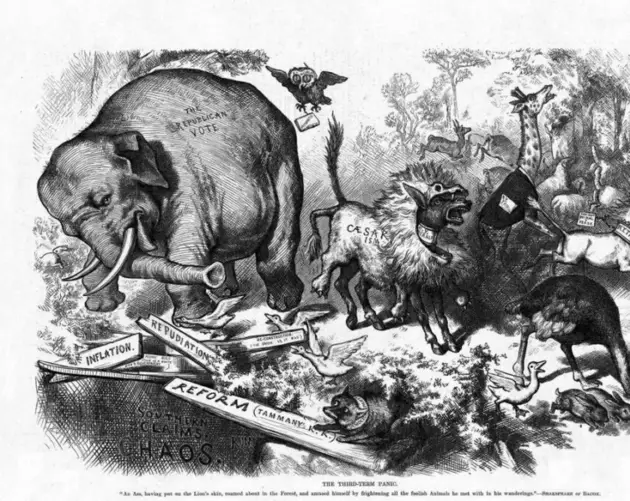Throughout the Civil War, Reconstruction, and the early years of the Gilded Age, Thomas Nast used his political cartoons published in Harper’s Weekly to satirize current events, expose corruption, and even influence elections.
In the second half of the 19th century, one of the most powerful political voices in the United States was not a politician or a president, but a cartoonist. Thomas Nast’s cartoons in Harper’s Weekly made him one of the loudest and most influential voices of his time.
Nast’s career began in the 1860s, and he went on to produce more than 2,000 cartoons. An ardent Republican, his cartoons were shouts of support for Abraham Lincoln, Reconstruction, and racial equality —and vicious critiques of Andrew Johnson, ex-Confederates, and carpetbaggers.
What’s more, Thomas Nast’s cartoons would help associate Democrats with donkeys and Republicans with elephants. He would even cement the modern images of Santa Claus and Uncle Sam in the popular American imagination.
In the gallery above, look through a collection of Thomas Nast’s cartoons. And below, read on to see how Nast’s illustrations influenced American politics and history.
Who Was Thomas Nast?

Library of CongressThomas Nast, by Thomas Nast. 1859.
Born on Sept. 26, 1840, in Germany, Thomas Nast arrived in the United States at the age of six. He studied at the National Academy of Design as a young man and, in 1862, began a fateful career with Harper’s Weekly.
At first, Nast drew scenes from Civil War battles and other vignettes of war life. In one image, Nast sketched a wife kneeling and praying for her soldier husband, who was depicted gazing at pictures of his loved ones. In another, he showed the aftermath of the Union defeat at the Second Battle of Bull Run.
In this image below, Nast depicted the Confederates as dishonorable victors. According to thomasnast.com, his drawing — backed up by testimony from a New York Times reporter —showed how the Confederates had robbed the dead and thrown their bodies into trenches.

Thomas Nast/Public DomainOne of Thomas Nast’s battle scenes. This one is entitled: “After the Battle — The Rebels in Possession of the Field.”
And as time went on, Thomas Nast’s cartoons became even more political.
How Thomas Nast’s Cartoons Influenced U.S. Politics
A strong supporter of Abraham Lincoln and the Union, Thomas Nast’s cartoons in the 1860s frequently supported the president’s policies.
After Lincoln’s Emancipation Proclamation on Jan. 1, 1863, which freed enslaved people in Confederate states, Nast produced a cartoon showing the dark history of slavery alongside the hopeful future for freed Black Americans. When the Democrats nominated Union General George McClellan with the platform “Peace at Any Price,” Nast published a scathing cartoon in September 1864 depicting Jefferson Davis standing on a Union soldier’s grave that’s marked by a stone engraved with the words: “In Memory of Our Union Heroes Who Fell in a Useless War.”
Afterward, Lincoln’s campaign team reprinted Thomas Nast’s cartoon captioned with “A Traitor’s Peace” and “The Rebel Terms of Peace!!”

Public DomainThe Lincoln campaign produced thousands of these pamphlets, which used Thomas Nast’s cartoon to attack George McClellan.
Nast, Ulysses S. Grant once supposedly said, “did as much as any one man to preserve the Union and bring the war to an end.” And Lincoln was quoted as saying: “Thomas Nast has been our best recruiting sergeant. His emblematic cartoons have never failed to arouse enthusiasm and patriotism, and have always seemed to come just when these articles were getting scarce.”


